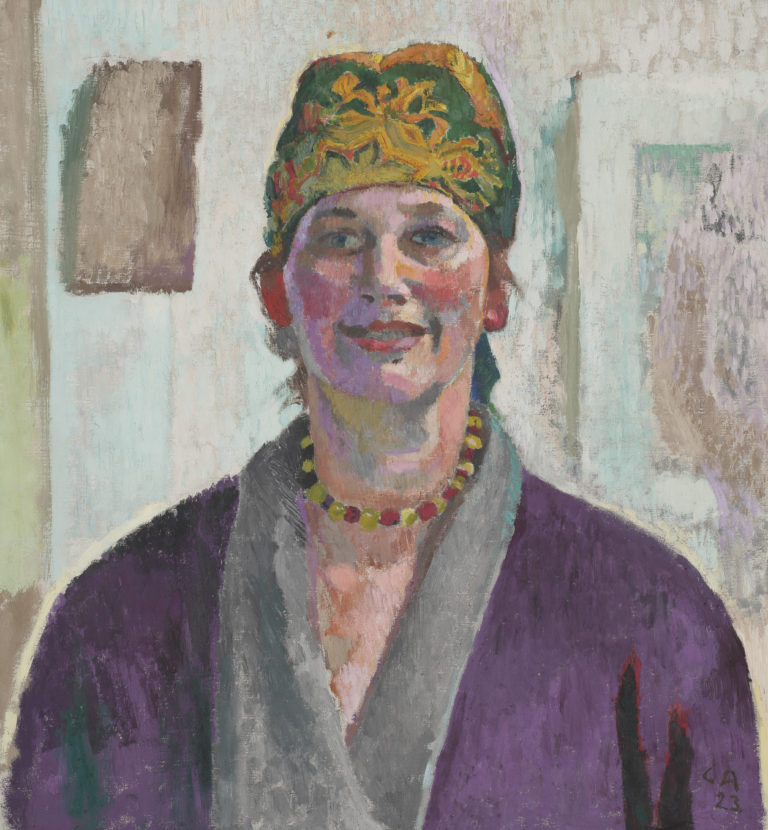Bibliography
Oskar Bätschmann, ‘René Auberjonois: une quête impossible,’ in Jörg Zutter (ed.), René Auberjonois, exh. cat. Lausanne, Musée cantonal des Beaux-Arts, Geneva, Skira, 1994: 57-73.
Hugo Wagner, René Auberjonois. L’œuvre peint – Das gemalte Werk, Catalogue des huiles, pastels et peintures sous verre, Zurich, Institut suisse pour l’étude de l’art, Denges-Lausanne, Éditions du Verseau, 1987: 114 and n. 400.




René Auberjonois frequently tried his hand at self-portraits. He was familiar with the difficulties of the exercise. As he wrote in 1916, ‘It is a tough challenge, this silent dialogue that is the painting of oneself.’ He also regretted that this confrontation with their mirror image elicited from many artists ‘the desire to strike an attitude’. For him, the sole aim of it all was to ‘seek my equilibrium within a frame’. This emphasis on form and composition to the detriment of originality of pose or setting was at the heart of his aesthetic. For, him it was always ‘poise’ that mattered: the solidity of the canvas, the way the body held itself, and even the way the sitter was dressed.
This 1929 self-portrait is a fine example of this austerity, starting with the painter’s outfit: rather than his painting clothes, he comes before us in a jacket and fully buttoned waistcoat, complete with white shirt and thin bow tie. The only exception to this sartorial neatness is the fringed blanket, which recalls the loose coat worn by Paul Cézanne over his shoulders in the famous etching by Camille Pissarro (1874). This is Auberjonois’s discreet homage to one of his masters.
Sitting up straight on a stool, the painter holds a palette on which he has put pure colours. These recall the fundamental elements of his craft, as do the gigantic hands and the concentration of his gaze. The construction of the painting is simple and severe. Three quarters of the background is occupied by a wide, dark-green panel. Behind the hand holding the brush, a strip of brown offers a transition towards a lighter expanse – a wall, perhaps, or a surface to be painted? The close framing, which excludes the easel from the composition, plays on this ambiguity.
In this self-representation painted for an exhibition held in Geneva in March 1929 and featuring self-portraits of all the major artists on the Swiss francophone art scene, Auberjonois clearly announces his refusal to compromise.